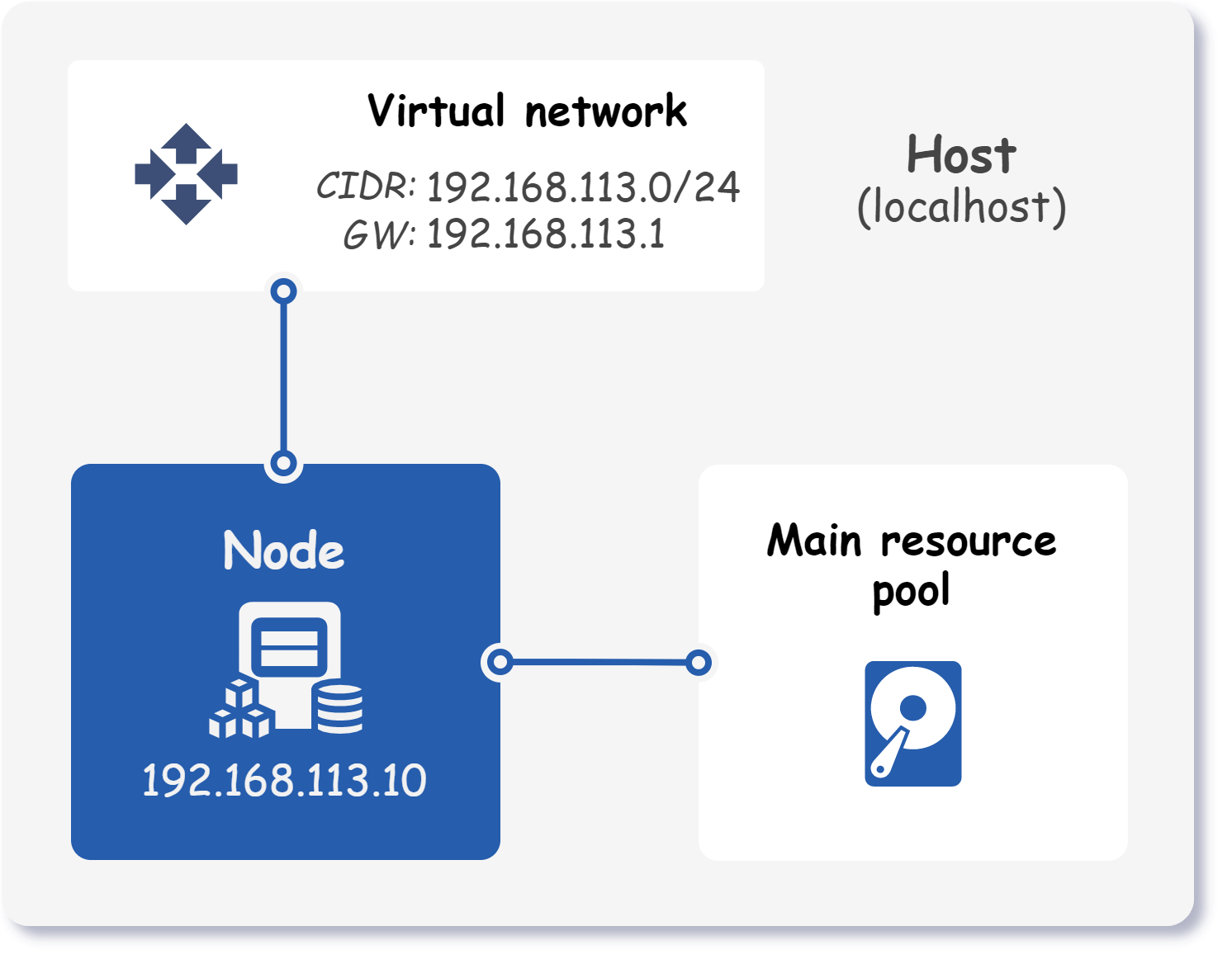Single node cluster🔗︎
This example demonstrates how to set up a single-node Kubernetes cluster using Kubitect. In a single-node cluster, only one master node needs to be configured. The topology of the Kubernetes cluster deployed in this guide is shown below.

Note
This example skips the explanation of some common configurations such as hosts, network, and node template, as they are already covered in detail in the Getting started (step-by-step) guide.
Preset available
To export the preset configuration, run: kubitect export preset example-single-node
Step 1: Create the configuration🔗︎
To initialize a single-node Kubernetes cluster, you need to specify a single master node in the cluster configuration file.
cluster:
...
nodes:
master:
instances:
- id: 1
ip: 192.168.113.10 # (1)!
- Static IP address of the node. If the
ipproperty is omitted, the DHCP lease is requested when the cluster is created.
When no worker nodes are specified, master nodes are labeled as schedulable, which makes them behave as both master and worker nodes. This means that the single master node in the cluster will perform both the control plane functions of a Kubernetes master node and the data plane functions of a worker node.
Final cluster configuration
hosts:
- name: localhost
connection:
type: local
cluster:
name: k8s-cluster
network:
mode: nat
cidr: 192.168.113.0/24
nodeTemplate:
user: k8s
updateOnBoot: true
ssh:
addToKnownHosts: true
os:
distro: ubuntu22
nodes:
master:
default:
ram: 4
cpu: 2
mainDiskSize: 32
instances:
- id: 1
ip: 192.168.113.10
kubernetes:
version: v1.28.6
networkPlugin: calico
Step 2: Applying the configuration🔗︎
To deploy a cluster, apply the configuration file:
kubitect apply --config single-node.yaml